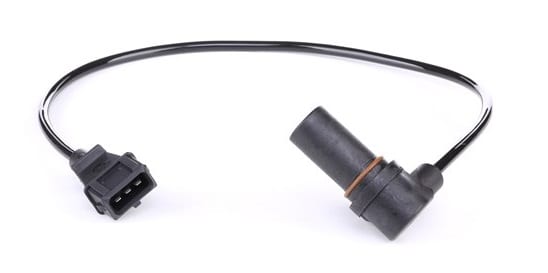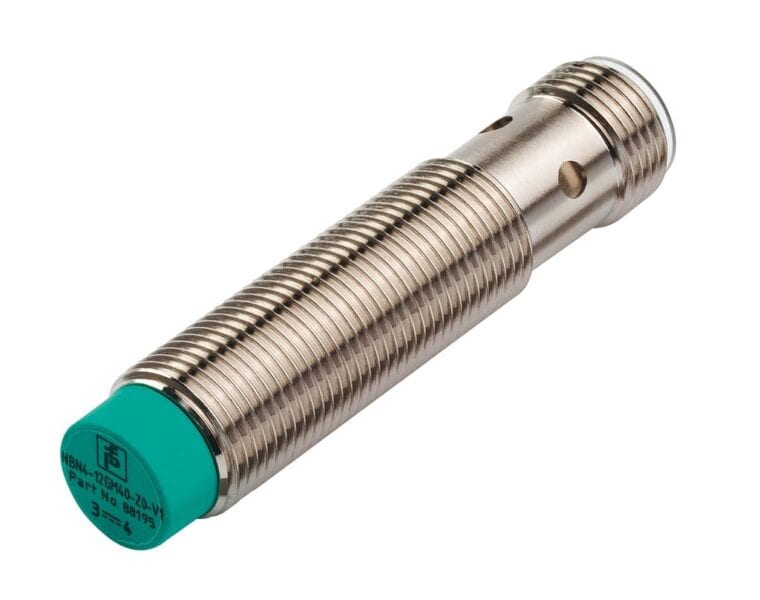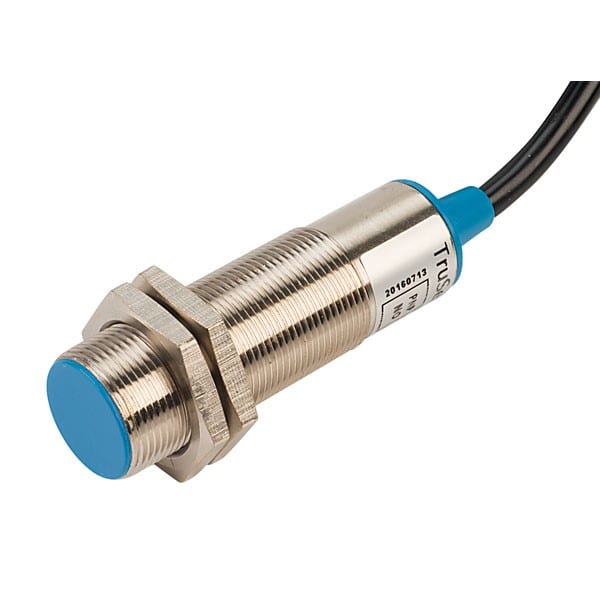
What is an inductive sensor?
Content
- What is an inductive sensor?
- How does an inductive sensor work?
- What elements does a proximity sensor consist of?
- Types of sensors in automotive systems and where an inductive sensor is used
- What else do we need to know about the inductive sensor?
- What should I look for when choosing inductive sensors?
- Questions and answers:
Modern automated systems use a large number of sensors that differ in characteristics and the principle of operation. One of the most common sensors that is used in many fields (including the automotive industry) is an inductive sensor, and now we will pay special attention to it.
What is an inductive sensor?
According to its characteristics, this sensor belongs to non-contact equipment. In other words, the inductive sensor does not have to be physically close to the object in order to determine its location in space.
Inductive sensors are commonly used in cases where it is necessary to work with metal objects and metals in a heavy working environment.
How does an inductive sensor work?
Due to its internal structure, the inductive sensor has certain operating principles. A special generator is used here, which gives a certain amplitude of oscillations. When a metal or ferromagnetic object enters the field of action of the sensor, the oscillations begin to be read and changed.
Let's simplify the principle of work ...
To get started, power is supplied to the sensor, which helps to form a magnetic field. This field, in turn, creates eddy currents that change the amplitude of the oscillations in the running generator.
The end result of all these transformations is the output signal, which can vary depending on the distance between the inductive sensor and the object under study.
The signal that originally comes from the sensor is analog, which is converted to logic using a special device called a trigger.

What elements does a proximity sensor consist of?
Of course, there are many varieties of inductive sensors, but they are united by the fact that they contain the basic elements:
Generator
The most important element in this type of device is the generator, as it creates an electromagnetic field that helps to detect and analyze metal objects and determine their position. Without the generator and the field created by it, the operation of the inductive sensor would be impossible.
Signal converter
This element is something like a trigger, and its task is to transform the signal so that the sensor can interact with other elements in the system to further transmit information.
Amplifier
An amplifier is necessary so that the received signal can reach the desired level of further transmission.
LED indicators
LED indicators monitor the operation of the sensor and signal that it is on or that various adjustment systems are being implemented.
Chassis
The housing contains all of the above
Types of sensors in automotive systems and where an inductive sensor is used
Electronic control systems for modern cars are unthinkable without sensors. Different types of sensors are used in almost all automotive systems. The car measures the temperature and pressure of air, fuel, oil, coolant.
Position and speed sensors are attached to many moving parts of the car, such as a crankshaft, distributor, throttle, gear shafts, exhaust gas recirculation valve and much more. In addition, a large number of sensors are used in car security systems.
Depending on the purpose, automotive sensors are divided into location and speed sensors, air flow sensors, emission control, temperature, pressure and others.
Inductive sensors are widely used to measure the speed and position of rotating parts, but it seems that the greatest application of sensors of this type is to determine the position and speed of rotation of the crankshaft of the engine.
Since inductive sensors are very reliable, especially when working in difficult conditions, they are widely used not only in the automotive industry, but also in the military, railway, space and heavy industries.

What else do we need to know about the inductive sensor?
An inductive location and speed sensor is a device with its own specifics, therefore, in the description of its operation, special definitions are used, such as:
Active zone
This zone means the area in which the degree of magnetic field is most pronounced. The core is located in front of the sensitive area of the sensor, where the level of magnetic field concentration is the highest.
Nominal switching distance
This parameter is considered theoretical, since it does not take into account production characteristics, temperature conditions, voltage level and other factors.
Working range
The operating range shows parameters that guarantee the efficient and normal operation of the inductive sensor.
Correction factor
The correction factor is related to the material from which the metal object is made, which is checked by the sensor.
Advantages and disadvantages of inductive sensors
Like all other devices, inductive sensors have their strengths and weaknesses.
Among the biggest benefits This type of sensors are:
- Simple construction. The design of inductive sensors is extremely simple and does not contain complex elements that require a special configuration. Therefore, the sensors have a high degree of strength and reliability, rarely break and can actually be used for a very long time.
- ·Special characteristics - the characteristics of inductive sensors allow you to easily install and connect them to parts of the automotive system.
- · Sensitivity - sensors of this type are quite sensitive, which allows them to be used when working with various metal parts and objects.
The only drawback is that it is possible that various external factors can act on the sensors during operation, and therefore it is necessary to provide appropriate conditions that could not interfere with the proper functioning of inductive sensors.
What should I look for when choosing inductive sensors?
Form
Inductive sensors are available in a variety of shapes, but the most common is a cylindrical shape with threads running the length of the sensor. The standard thread classification string is M 5, M 8, M 12, M 18 and M 30.
Reaction distance
It depends on the specific characteristics of the generator, which are affected by the eddy currents of the measured position. The range varies from 1 mm. up to 25 - 30 mm. depending on the manufacturer.
Type for sensor
Usually sensors are analog (1-10V, 4-20mA) and digital. The latter, in turn, are divided into the PNP type and the NPN type. In addition, it is important to determine whether the sensor has a normally open (NO) or closed (NC) output element.
The wire
Usually a two-wire or three-wire cable is used, but the sensor can also be connected to the connector.
Questions and answers:
What are the operating principles and applications of inductive sensors? Such sensors work based on the change in the magnetic field in the coil when a metal object enters the area of the magnet. An example is in oscilloscopes, ammeters, even in car washes.
How do induction sensors work? They measure the magnitude of the electromotive force of induction. When a current flows in the coil of the sensor, and a metal object passes by it, it changes the strength of the magnetic field, and the sensor detects the presence of this object.
What are inductive sensors? High pressure resistant, double wire, all metal, heat resistant, magnetic field resistant, explosion proof, annular, tubular and standard.
